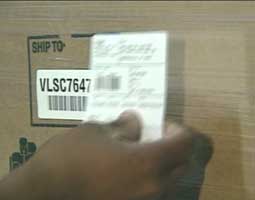 Category: Inventory Reduction Category: Inventory Reduction
- Reduction in inventory levels due to greater confidence in overall accuracy when planning
- Reduction in inventory shrinkage/write-offs/obsolescence
- Reduction in lost inventory due to shipping errors
Category: Overhead Savings
- Reduced costs of mis-shipments
- Improved space utilization
- Reduced costs of scrap/rework
- Improved overall productivity from better material flow/Lean
- Reduced Expediting costs
Other Savings
- Improved management effectiveness
- Costs of printed forms/labels
- Reduced costs for returns processing
- Better cost data for bidding/pricing
- Reduced costs for recalls
There are potentially a number of other “soft” benefits that nonetheless can be very real and important elements of an overall system justification. Those include things such as improved customer service, increased sales, improved management effectiveness, etc.
Example Calculation
Below, we look at a specific example from the above list, the potential savings from reductions in manual data entry, and will use a potential new bar code system as the basis for the example.
So, let’s look at a hypothetical receiving area, and assume (based on analysis) that the average worker currently spends about 33 minutes per shift dealing with manual data entry and forms. Let’s further assume that there are 8 receiving associates, each averaging $25.00 per hour including benefits, and that if shipments from the factory were bar coded, the time it takes to process the receipts through scanning would shrink per employee per shift from 33 minutes for manual data entry to 7 minutes for scanning.
Total Time Savings per Employee Per Shift: 26 minutes (33 – 7).
Total Time Savings per Shift: 208 minutes (26 x 8)
Total Times Savings per Year: 52,000 minutes or 866 hours (208 x 250 days/60 minutes per hour)
Total Annual Savings from Receiving: $21,666.00 (866 x $25.00)
This would be repeated for each area of the Distribution Center or factory, and along with other savings from other categories to develop an overall savings estimate. That would need to be compared to upfront and any recurring costs to determine an overall return on investment or payback period.
Obviously, there are a lot of other assumptions that can be applied to this analysis and calculations that may need to be made, such as whether all of the theoretic time savings will truly result in actual labor cost savings.
Also, it is very easy to “double count” savings, since different categories can sometimes overlap.
Nonetheless, this model is a good place to start in calculating the potential benefits of adding any automatic identification system, and looking at the incremental benefits of moving from bar code to RFID.
What would you add to our model of potential savings from use of auto ID technologies? What has been your experience in justifying these types of systems? Let us know your thoughts at the Feedback button below. |